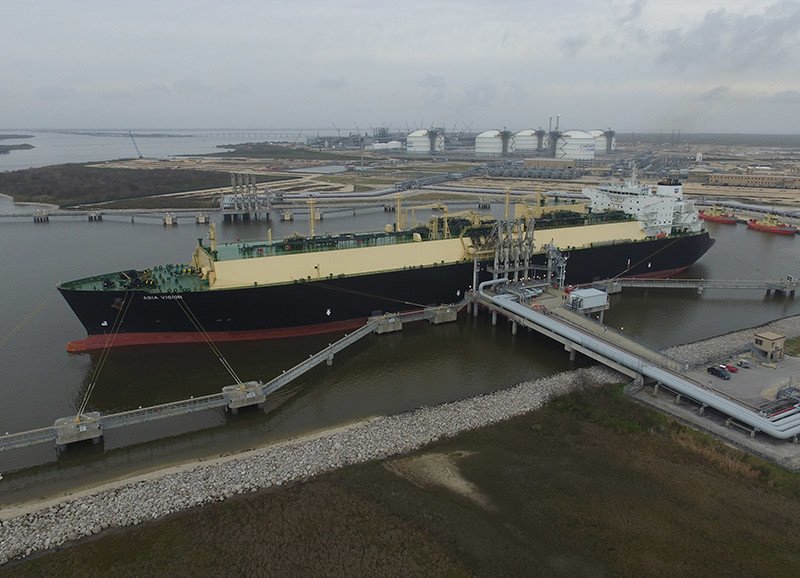Step aside Australia and Qatar. The U.S. is poised to become the global leader in liquefied natural gas (LNG) export capacity by the end of this year, the U.S. Department of Energy (DOE) said.
The bulk of U.S. LNG exports are delivered off the coasts of Louisiana and Texas, where expansions of existing facilities and newbuild terminals will increase cumulative peak capacity to 13.9 Bcfd, the DOE said in a Dec. 9 note. That will exceed the peak export capacity of perennial LNG top dogs Australia and Qatar by 2.5 Bcfd and 3.5 Bcfd, respectively. The DOE describes peak capacity as the volume of LNG produced under optimal operating conditions, including modifications to production processes that increase operational efficiency.
Getting to this point, however, has meant playing catch up in a big way, as the nation’s first international-bound LNG cargo didn’t depart Cheniere Energy’s pacesetting Sabine Pass terminal in Louisiana until February 2016. By comparison, gas-rich Australia has been exporting LNG since 1989, while Qatar followed suit in 1997.
The four terminals on the Gulf Coast are by far the largest of the seven existing U.S. LNG export facilities with a combined capacity of 10.29 Bcfd as of the end of 2021, according to the Federal Energy Regulatory Commission (FERC). The remaining three — Kenai, Alaska, Cove Point, Md., and Elba Island, Ga. — together account for only 351 MMcfd of export capacity.
Cheniere remains the largest of the U.S. shippers with aggregate capacity of 6.01 Bcfd at Sabine Pass and its Corpus Christi, Texas, terminal that opened in 2018. The company’s total capacity is expected to grow by up to 0.76 Bcfd in early 2022 with the completion of a sixth processing liquefaction unit (or train) at the Sabine Pass facility. Even with Hurricane Ida-induced delays, the two terminals together shipped out a record 141 cargos in the third quarter of 2021, said President and CEO Jack Fusco.
By year’s end, another 1.6 Bcfd, or 12 MM metric tons/annum, in nameplate capacity is expected to come on line when all 18 liquefaction trains of the Venture Global LNG Calcasieu Pass facility near Lake Charles, La., go into full operation.
Meanwhile, partners QatarEnergy and ExxonMobil are looking to overtake Chenier as the premier LNG producer in the U.S. with the targeted 2024 start-up of the Golden Pass LNG terminal on the Texas side of Sabine Pass. Estimated “send out capacity” of the facility is 16 MM tons/yr. Rather than a new build, the roughly $10-billion project entails the addition of liquefaction and export capabilities at an existing facility.




